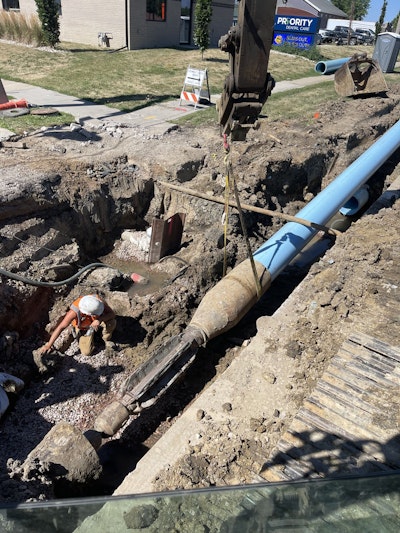
The project in Sioux Falls included pipe bursting 2,000 feet of 16-inch cast iron main and 2,200 feet of 20-inch ductile iron main. Crews used a 1900G Grundoburst static pipe bursting system. (Photography by TT Technologies)
Across the United States, cities are fighting the battle against deteriorating infrastructure. While the power grid often steals the headlines, the infrastructure carrying one of the most precious resources, potable water, is also in need of serious attention.
The city of Sioux...







